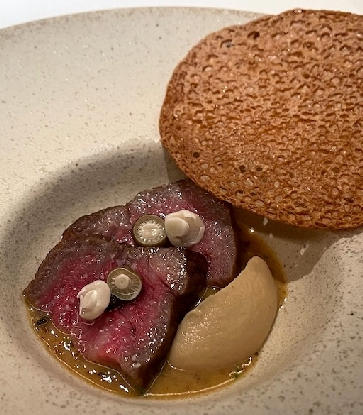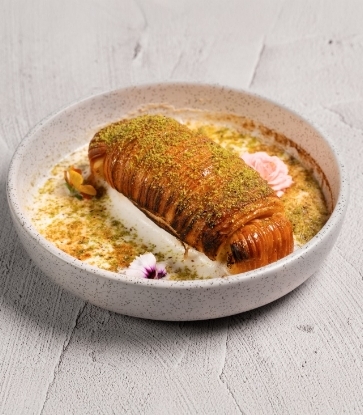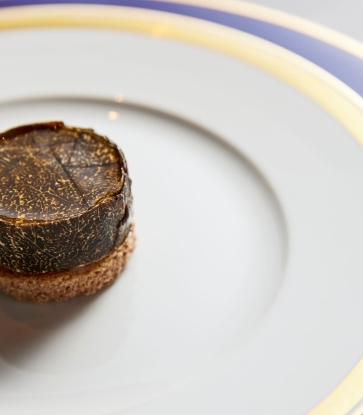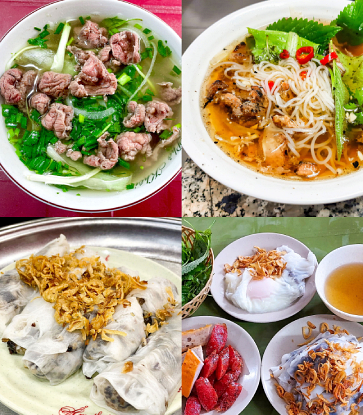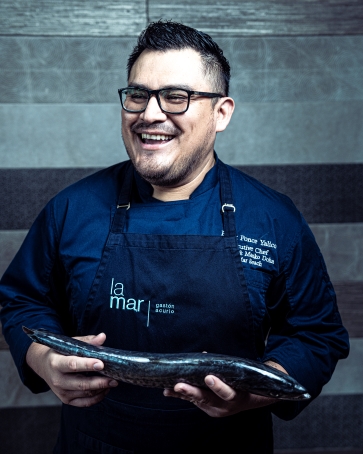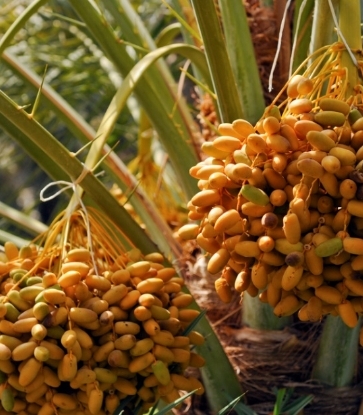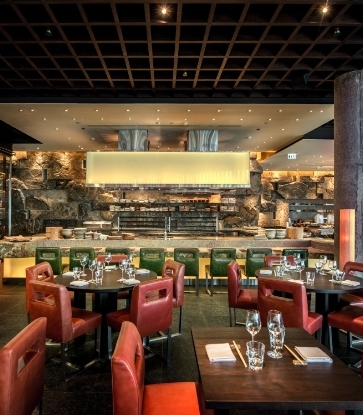Ask different people for their definition of Qatari cuisine and you’ll get different answers. Today, the cosmopolitan capital’s culinary landscape is on par with gastronomy hubs around the world, with myriad global influences seen on menus across Doha. Even in Middle Eastern spots, menus span the Arab world, from North Africa to the Levant and even, in many cases, South Asia (think biryani or samboosa).
Yet Qatari cuisine has its own unique identity and is traditionally found on tables in family homes. It is a cuisine built on memory and nostalgia, with dishes passed down through generations, shaped by trade, and adapted to desert life and coastal living.
These restaurants, all featured in the MICHELIN Guide Doha 2025, not only preserve that legacy but push it forward, inviting diners to experience the depth of Qatari culture with every bite.
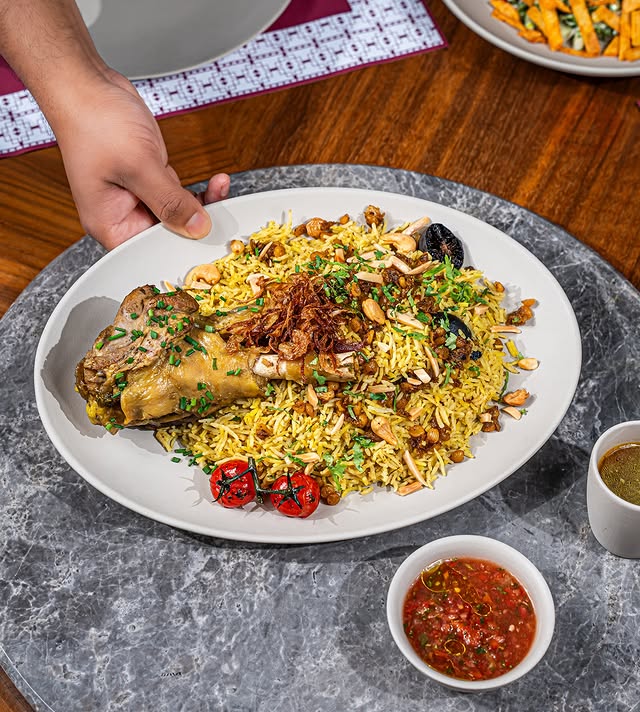
Machboos
Often referred to as Qatar’s national dish, machboos is a spiced rice dish with roots cooking and centuries of Gulf trade. it’s often made with chicken, lamb or local seafood like hammour, and flavored with dried lime (loomi), cardamom and cinnamon.MICHELIN-selected Bayt Sharq, which lives within Old Doha, inside the 100-year-old Al Khulaifi Heritage House, is known for its classic take on the dish, paying tribute to its origins.
At the National Museum of Qatar – a contemporary architectural masterpiece that takes design cues from the desert landscape – Chef Noof Al Marri puts her own twist on local favorites, including machboos with slow-cooked lamb shank at MICHELIN-selected Desert Rose Café.
Elsewhere, at MICHELIN-selected Saasna, in the heritage-inspired Msheireb Downtown Doha district, the machboos celebrates Qatar’s coastal identity by incorporating local favorite fish and seafood such as hammour and shrimp.
For something more unique, head to MICHELIN-selected SMAT, which translates as “dining table” in Khaleeji Arabic. Amid an opulent dining room located off Doha’s Corniche, within the Orient Pearl complex, diners are taken on a journey through Qatar’s gastronomic heritage, although the chefs have added their own creative touches. This includes machboos served with kofta pieces of beef loaf dipped in brown mushroom sauce, a version with slow-braised tender beef ribs seasoned with thyme and topped with tomato ragout, as well as another with hammour slathered in a saffron-dill tartare sauce.
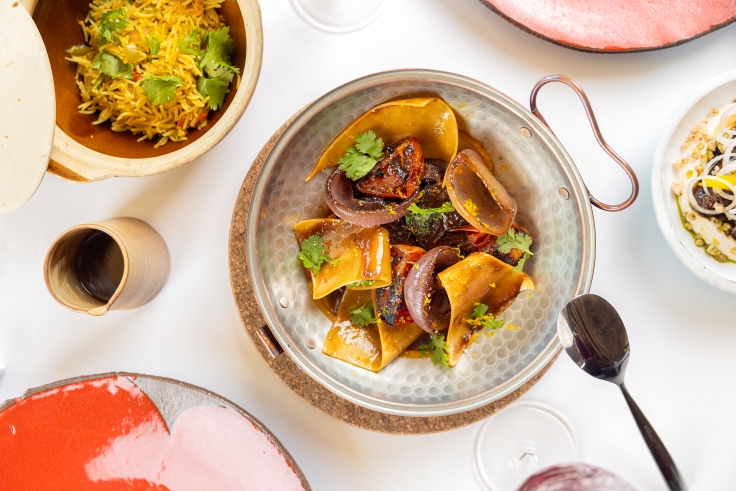
Margoog
Born from local resourcefulness, margoog is a thick stew made with meat, vegetables and thin wheat discs of dough that soak up the broth. It was often cooked slowly over coals, ideal for communal desert meals.Bib Gourmand Jiwan offers a sophisticated version using beef cheek and orange sauce, reflecting both the dish’s depth and the restaurant’s inventive spirit. As you would expect from a fine-dining restaurant sitting within the National Museum of Qatar, Jiwan takes classic Arab and Middle Eastern dishes and offers a unique interpretation with each recipe.

Madrouba
This creamy rice porridge is comfort food across the Gulf. Made by simmering rice, meat and spices until the grains break down, madrouba was historically eaten during Ramadan and colder months due to its nourishing quality.While Bayt Sharq keeps its version traditional and rooted in home cooking, SMAT serves it two ways: a chicken madrouba with a rich tomato sauce inspired by dakkous (a spicy tomato condiment found in many Qatari homes) and a shrimp version featuring local spices and aged black lime.
At Jiwan, a lamb madrouba with cumin and ghee offers a more elegant, slow-cooked interpretation.
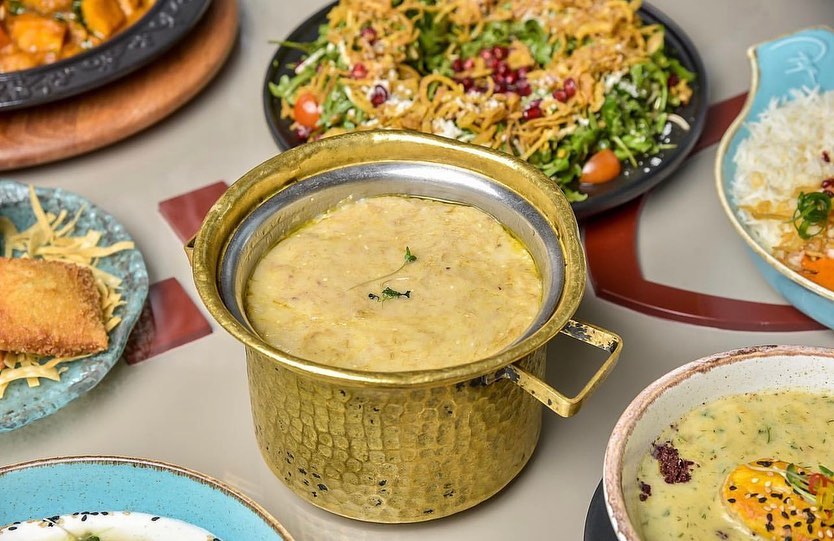
Harees
With origins across the Arab world, particularly the Khaleej, harees is a simple dish of cracked wheat and meat – sometimes chicken – mashed into a porridge-like consistency. In Qatar, it’s often eaten during Ramadan and on special occasions, valued for its softness and simplicity, gentle on the stomach after a full day of fasting.You can find traditional harees at Bayt Sharq, with a version true to how it’s long been made in Qatari homes. Desert Rose Café incorporates lamb shank and microgreens for a modern flourish, while SMAT further elevates the dish with veal slow-cooked for six hours.
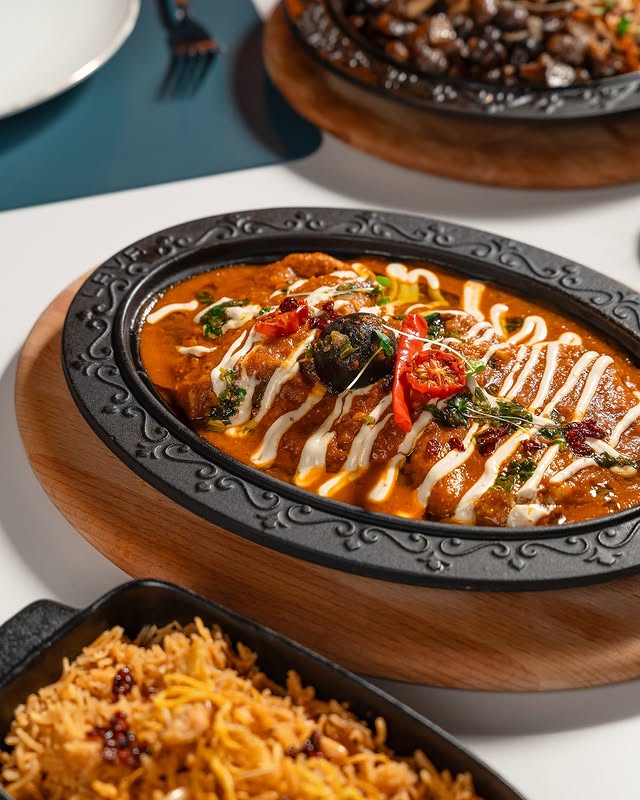
Seafood specialties
Qatar’s pearl-diving past and coastal geography make seafood a cornerstone of its cuisine. At Jiwan, try the hammour tandoori naan, part of the chef’s signature mezze selection, which features naan bread stuffed with the popular local fish and infused with traditional spices.SMAT also offers myriad fish dishes, such as safi with local-style mutabbaq rice, kanad with a black lime and herbs stew, or seabass on rock salt dough and marinated with Qatari spices.
Dive into some fried Sultan Ibrahim fish at Bayt Sharq, as well as jasheed (a fish and rice dish) with white basmati rice, although this version features tuna rather than the traditional baby shark.
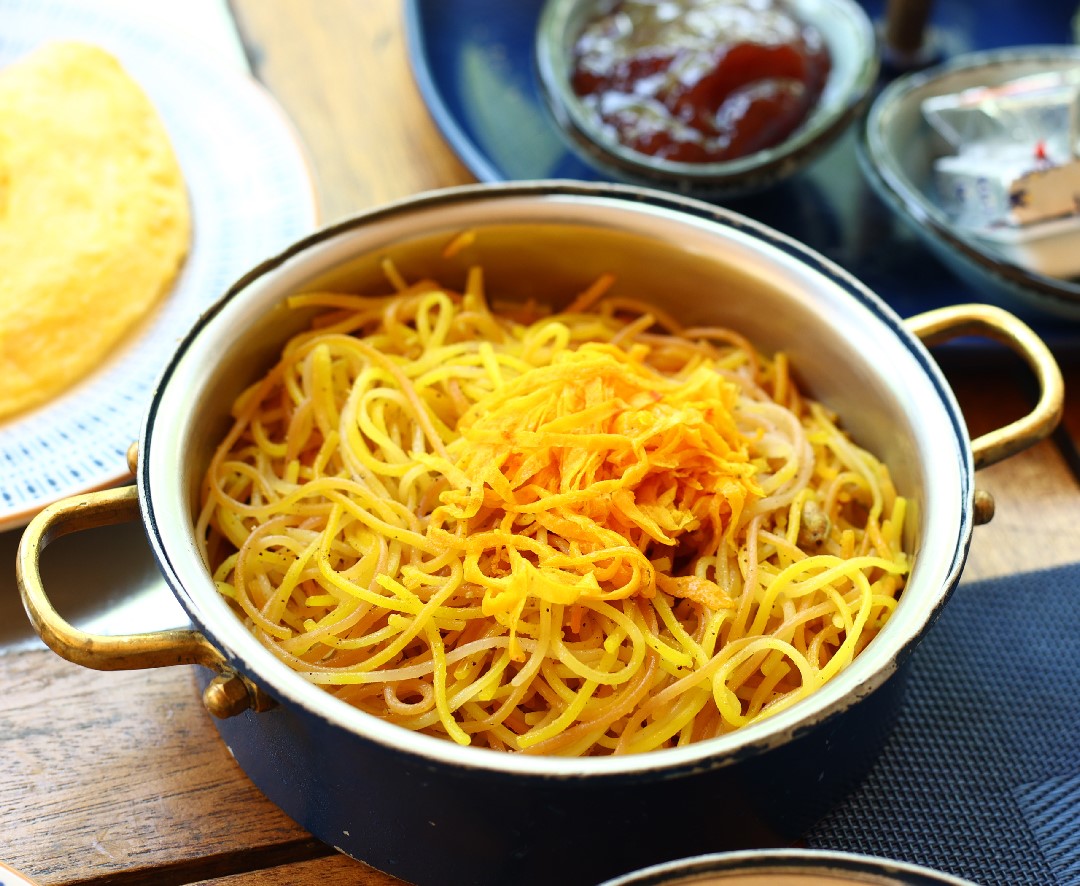
Balaleet
Sweet and savory breakfasts are a hallmark of Qatari cuisine and balaleet is one of the most iconic. Vermicelli noodles are cooked with saffron, rosewater, cardamom and sugar, then topped with an omelet.At Bayt Sharq, the interpretation is more traditional, with saffron-infused noodles, caramelized golden onions, and a touch of cardamom. At Desert Rose Café, Al Marri mixes it up by swapping the omelet for scrambled eggs.
SMAT, meanwhile, turns the dish on its head by stuffing it inside a samboosa and pairing it with a pistachio cheesecake for a playful dessert-meets-breakfast twist.
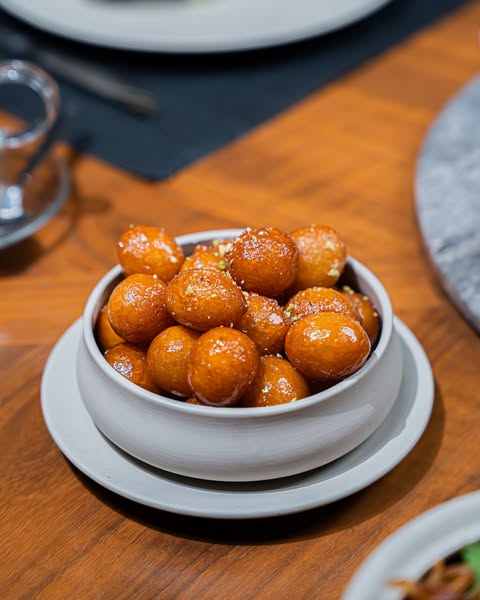
Luqaimat
The ultimate Qatari dessert, these crispy, syrup-soaked dumplings have long been a feature of Ramadan evenings and celebratory meals – or simply a sweet and tasty snack. Made from dough and fried until golden, the bite-sized balls are coated in date syrup or honey, various recipes passed down for generations.Find a classic version at Saasna in Msheireb, a smart city brimming with contemporary character in the middle of Old Doha. This MICHELIN-selected café is simple yet elegant and the kitchen team is determined to preserve and celebrate the country’s culinary history while bringing it into the 21st century, an ethos inspired by the late Sheikha Ahmed Al Meer, author of The Art of Qatari Cooking.
Illustration image: SMAT




